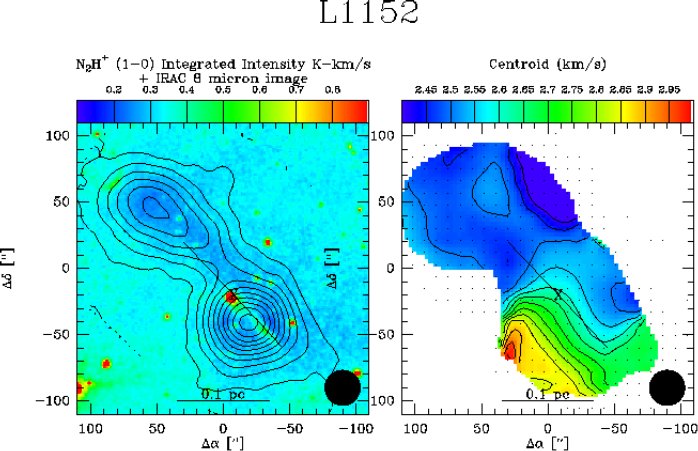| EPoS Contribution |
|
Morphological Complexity of Protostellar Envelopes
John J. Tobin University of Michigan, Ann Arbor, MI, USA | |
| Using 8 micron shadow images from Spitzer, I show that the dense envelopes around Class 0 protostars are generally morphologically complex and frequently non-axisymmetric. These structures indicate an origin in turbulent cloud structure and increase the likelihood of fragmentation during collapse forming close binaries. This complex complex envelope structure is observed in regions spatially distinct from outflow cavities, and often show no systetmatic alignment perpendicular to the cavities; more than a quarter of the sample are filamentary. To further characterize these systems, we have observed them in the dense gas tracers N2H+, N2D+, and ammonia which closely follow the extinction morphology. Several systems show large velocity gradients and/or linewidths near the protostar, as expected if infall is taking place. My findings emphasize the need for simulations of protostellar system formation from complex initial cloud core structures. | |
 | |
| Caption: This figure shows the protostellar system forming in the L1152 dark cloud. The IRAC 8 micron shadow image and N2H+ emission contours (left) show that the dark cloud has fragmented with only one clump harboring a protostar (marked with X) which drives an outflow in the direction of the drawn line. The protostar is offset from the N2H+/extinction peak indicating that infall to it will be non-axisymmetric. The velocity field (right) near the protostar shows a velocity gradient perpendicular to the outflow of 0.4 km/s over 0.1 pc; quite different from the starless clump to the north. | |
| Collaborators: L. Hartmann, Michigan, USA E. Bergin, Michigan, USA L. Looney, Illinois, USA S. Maret, LAOG, France H. Chiang, Illinois, USA F. Heitsch, North Carolina, USA J. M. Masque, Barcelona, Spain |
Key publication
Suggested Session: Cores and Collapse |

